Annapurna
Veggie-rich soup with buckwheat dumplings.
Welcome to 10 Hindu Goddesses, 10 recipes! The recipes may or may not be South Asian in type of cuisine, and they may or may not be made with climate change in mind.
Annapurna is a goddess of food and nutrition — an apt choice for this newsletter.
The famed Bengali artist Nandalal Bose made the haunting painting below of her in 1943, during the height of the Bengali famine, a complex disaster of British imperialism, during which more than 3 million people died.
Who is the skeletal figure next to Annapurna, knocking on death’s door? It’s Shiva, the supreme divine being, rendered tragically mortal here. This painting depicts the origin story of Annapurna, which mirrors the dark modern reality Bose was living in.
Summarizing From India Heritage Lab, with some direct quotes:
One day, Shiva and his wife Parvati are playing a game of dice that Parvati wins resoundly. A master of the universe but also a sore loser, Shiva asks Vishnu to rig the game next time the couple plays it. When the couple plays again, Shiva wins back the items he lost, then boasts to Parvati about Vishnu’s game-rigging in his excitement.
Parvati then says the game doesn’t count because Shiva cheated — the game was an “illusion.” “With nothing to say in his defence, Shiva quipped that everything in the world is an illusion, including things like food.”
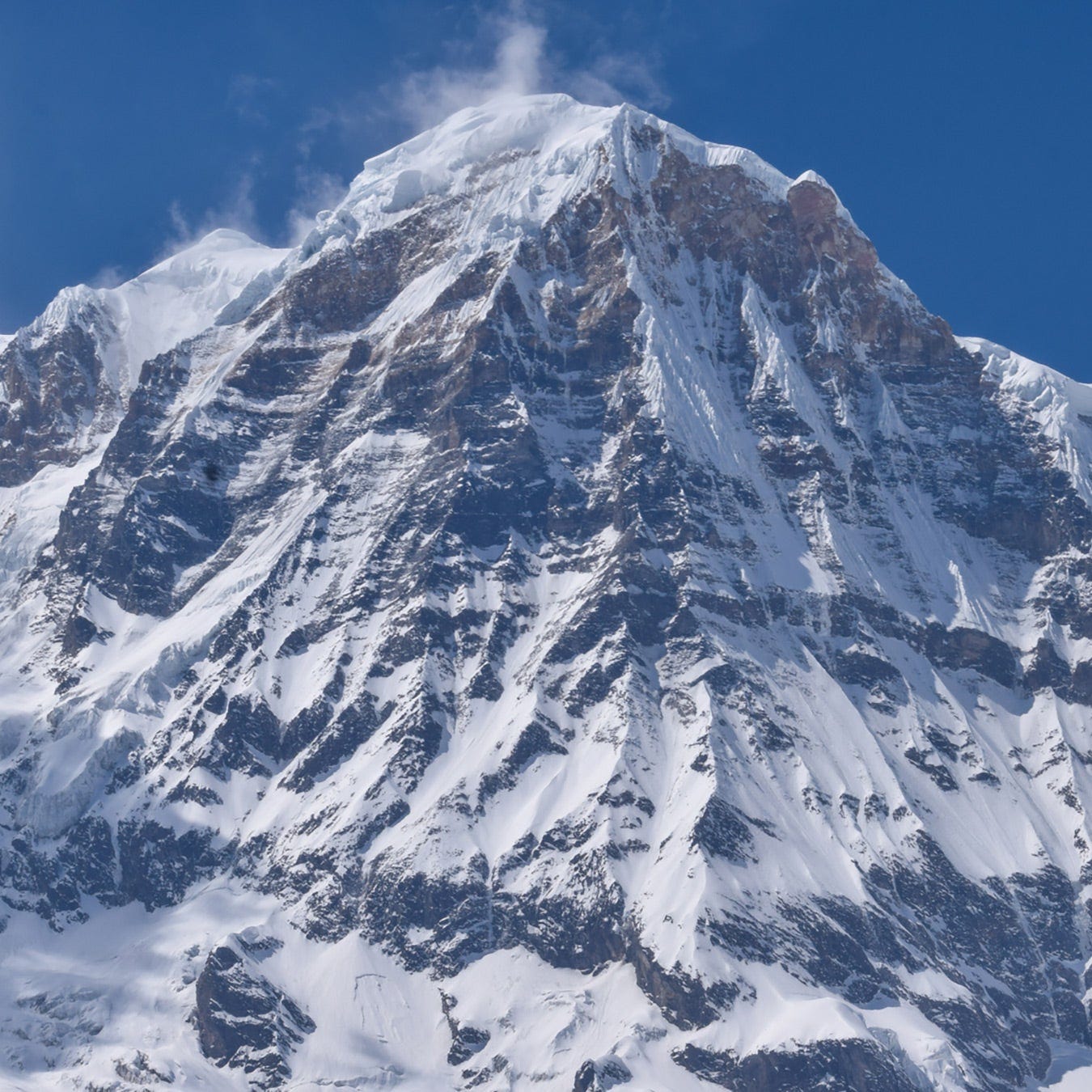
Parvati finds this retort extremely disrespectful and tone-deaf — a real “let them eat cake” moment. To teach Shiva a lesson, Parvati disappears from Earth. Without her, time on Earth stands still. Seasons don’t change and land loses its vitality. Crops die and don’t grow back, and people — Shiva’s devout followers — starve.
Unable to tolerate more suffering, Parvati re-appears onto Earth as Annapurna, in the city of Kashi (now the holy city Varanasi). She brings food and serves the people. One of the people who come to her for sustenance is none other than Shiva, begging for her forgiveness and acknowledging she’s right — food is no mere illusion.
This story is dark and delightful. There’s a lot to unpack about our inner vs. outer lives, the Earth vs the cosmos, man vs. woman. I’ll leave you to ponder these. I’ll just add: I love a story where a man is proven wrong.
Recipe time
Here’s a winter soup that embodies a few of Annapurna's delightful traits: nourishing, practical, bold. And this recipe has two climate components as well!
Uses buckwheat — a climate-smart, "underutilized” grain.
And even more importantly, all the ingredients were foods I've already purchased. For example, I thought of buying miso to make this soup, but decided to use beets and potatoes to thicken it instead. I also thought of buying a chili oil, but then made chili paste from the big pack of dried chilis that I already have. I'm proud of myself — this is the first newsletter recipe for which I didn't make special grocery trips!
Real question:
For me and my probable ADHD, it’s a hard no. So that makes recipe-writing a challenge. But for this soup, I did think through the building blocks of food and flavor that step by step, lead to the final meal:
I love making veggie stock! It makes me feel homey and productive, and it eases my guilt about wilted vegetables — aka, home-cooked meals I should have made and eaten days ago. I wish I remembered to take a picture of this stock because it was a particularly rich, golden-dark color. I popped in the two bulbs of ginger in the back of the fridge I had, plus a bunch of wilted vegetables in a big pot of water, heated high til boil point, then simmered for an hour or two.
I steamed a couple of beets and potatoes and added to the stock. An immersion blender would be perfect for blending these to turn stock into soup. I also added the beet greens that came with the beets.
It’s fun to see the cultural variations of buckwheat dumplings — they’re made in places including Korea, Japan and Slovenia. I made little ball-shaped dumplings from the pasta dough I made here, then steamed them for about 15 minutes.
Chili paste:
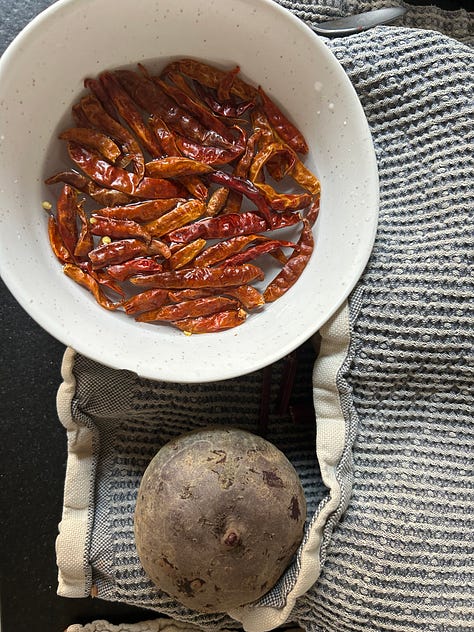
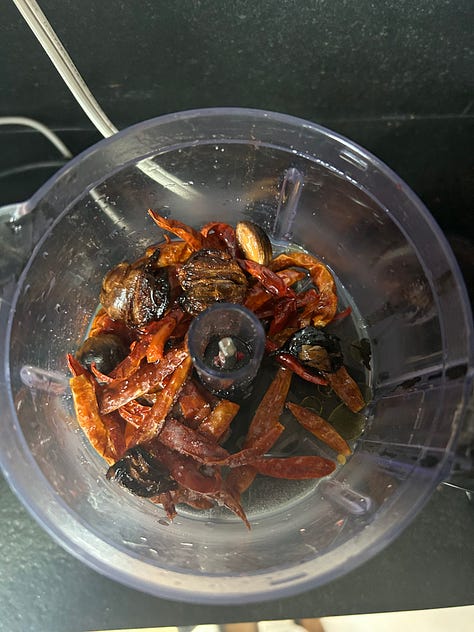
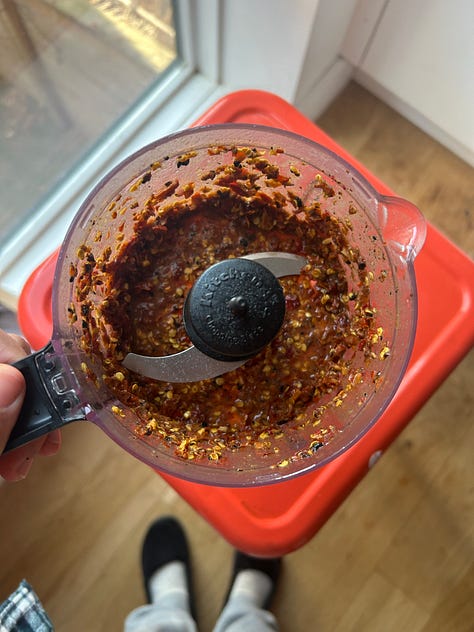
This soup alone is pretty flavorful on its own, but the Desi in me loves and needs sauces, chutneys, toppings. To make this chili paste, I (partially) re-hydrated a bunch of dried chilis in water with a splash of white wine vinegar. Then I blended them with a bit of olive oil, a bit more vinegar and roasted garlic. The little black spots in the middle picture are burnt garlic — I put them in the toaster too long. But they worked great — and even gave the paste a bit of a smoky flavor.
Here’s the final product:
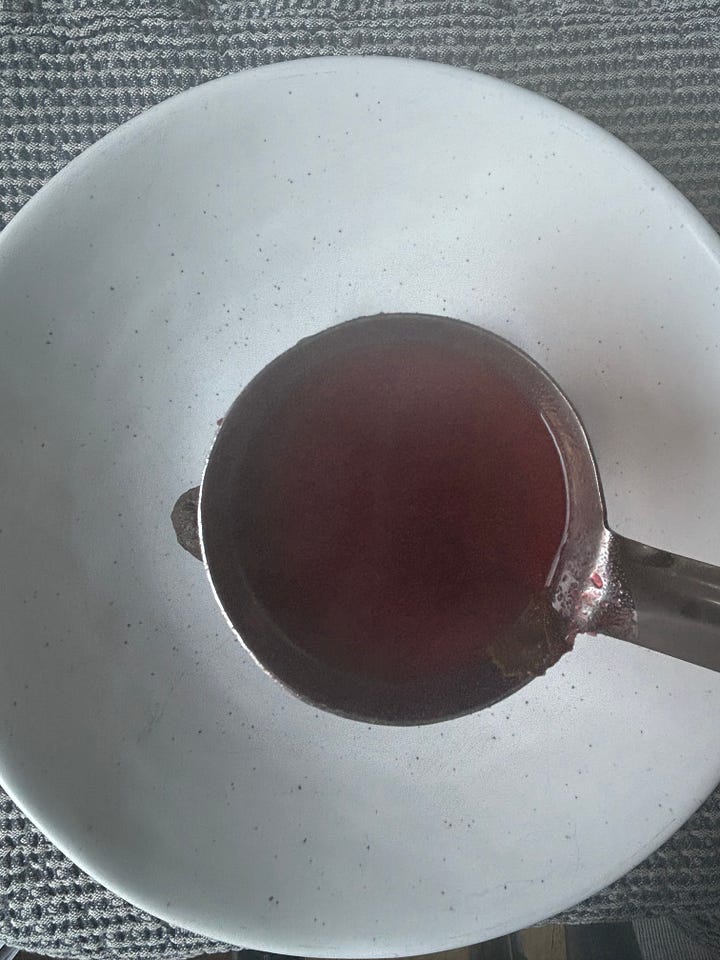
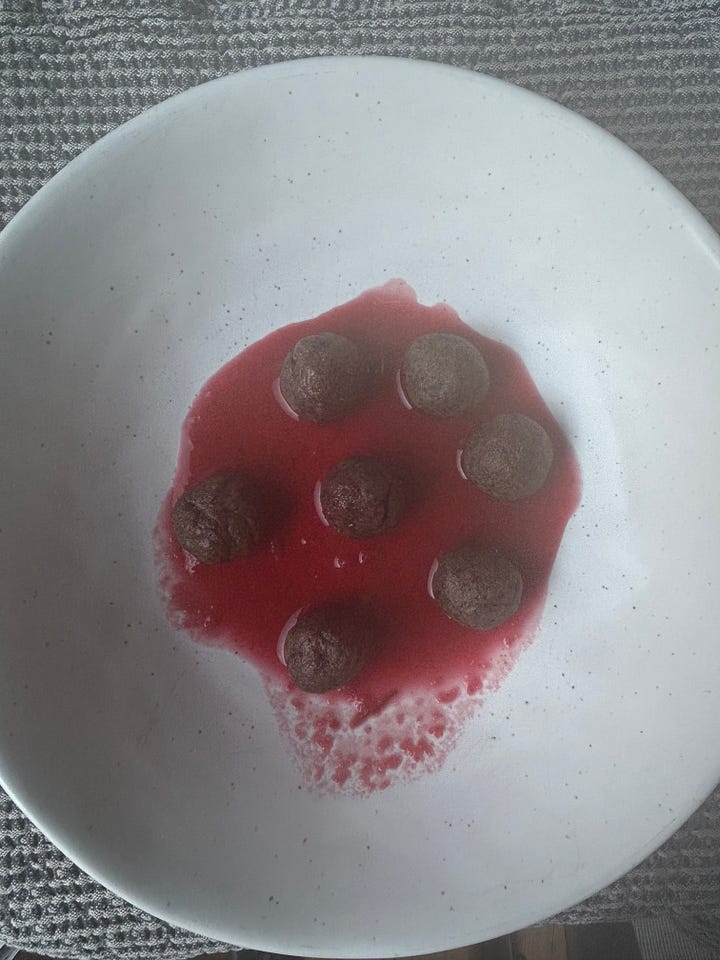
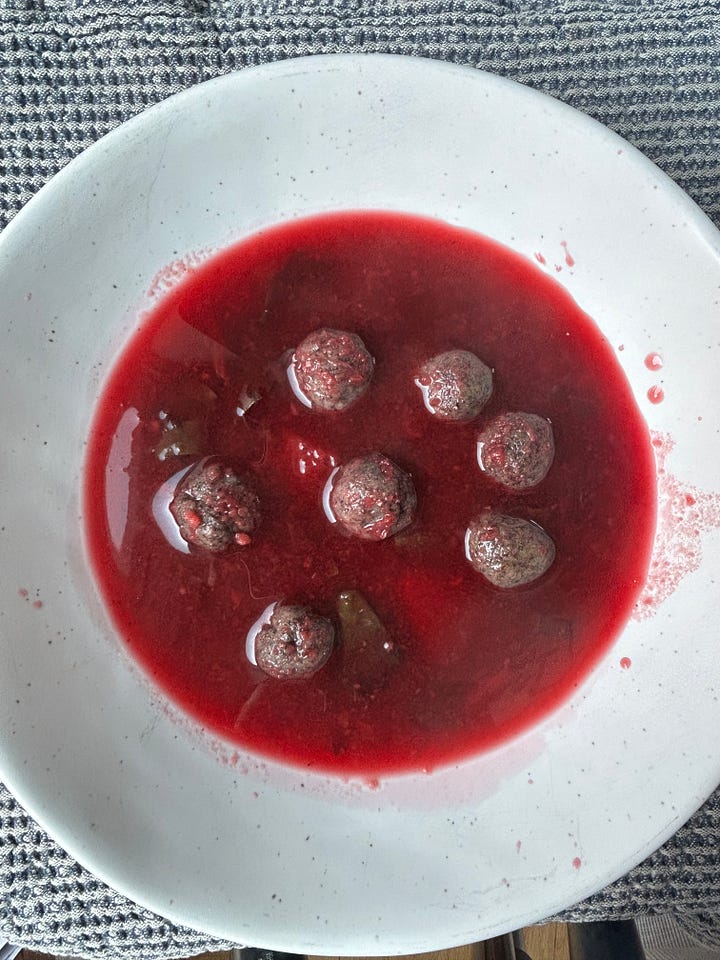
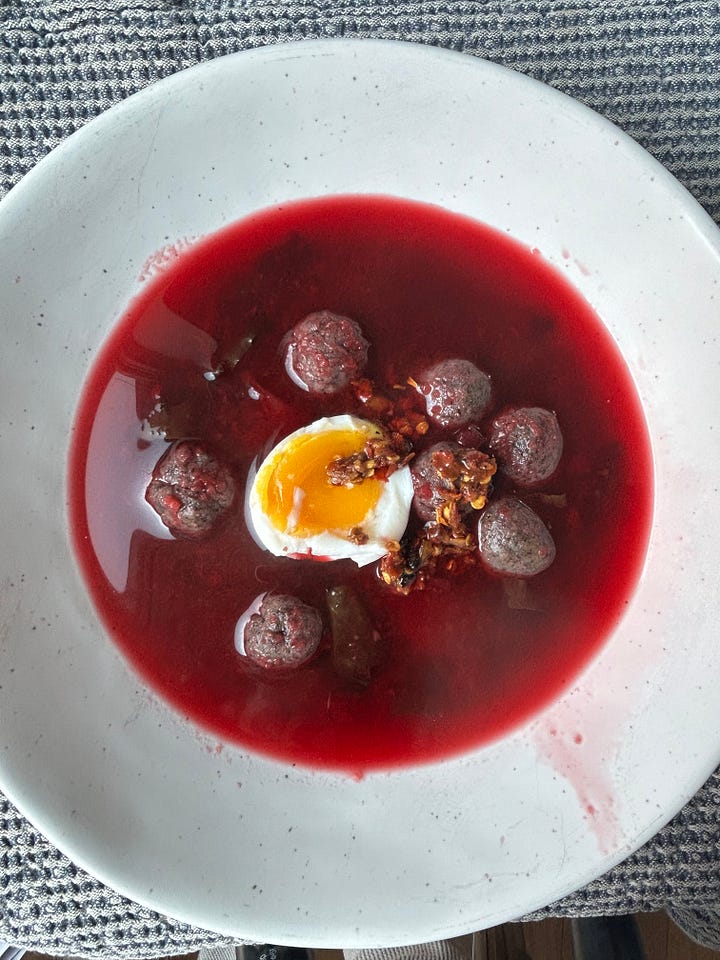
Plus an egg! There you have it: the most nutritious soup I could think of, in humble tribute to both the goddess of nutrition and this brutal New York winter.
Newsfeed:
“The Case for the Public Grocery Store”, The Checkout. A detailed and strong case for scaling public grocery stores in the U.S. According to Errol Schweizer, "the irony here is that public sector grocery stores may be a crucial vehicle for ensuring free and fair enterprise in the food industry."
“Is pistachio the new pumpkin spice? Why production of the nut is booming in California,” The Guardian. Why are we seeing signs for pistachio lattes instead of hazelnut lattes? This article is a fine example of what I want to write about: foods, including drought-resistant pistachios, that will serve us as our climate changes.
“Lorne Michaels is the Real Star of Saturday Night Live,” The New Yorker. If like me, you’ve watched SNL on and off for pretty much your entire life, you’ll enjoy this profile. My favorite line: “If he makes a bad decision, there’s always next week."
Thank you for reading! Please ❤️ below if you liked, and I’d love to hear your thoughts and feedback!




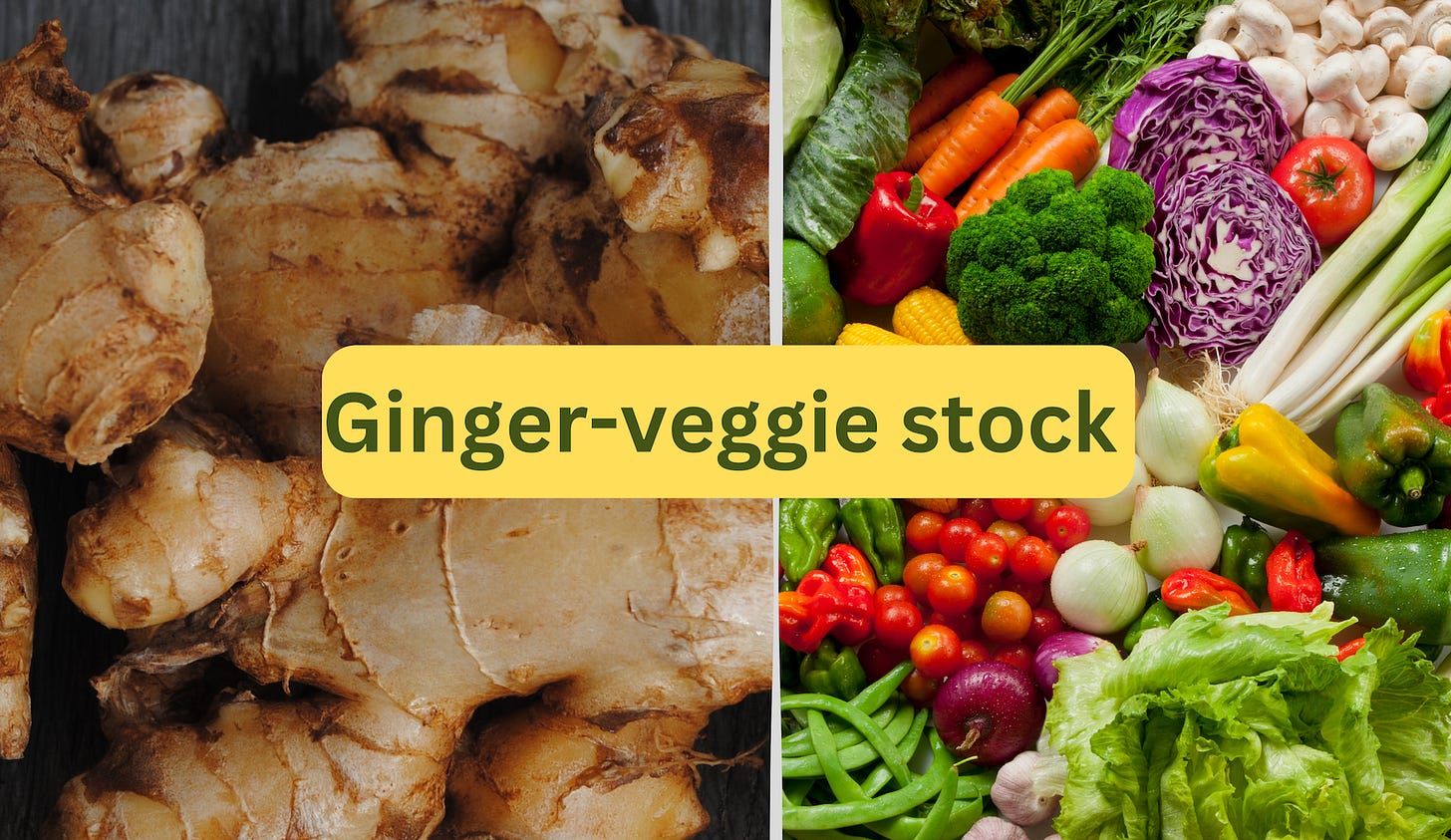
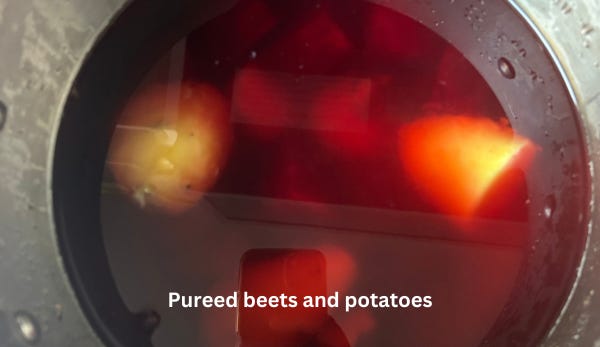
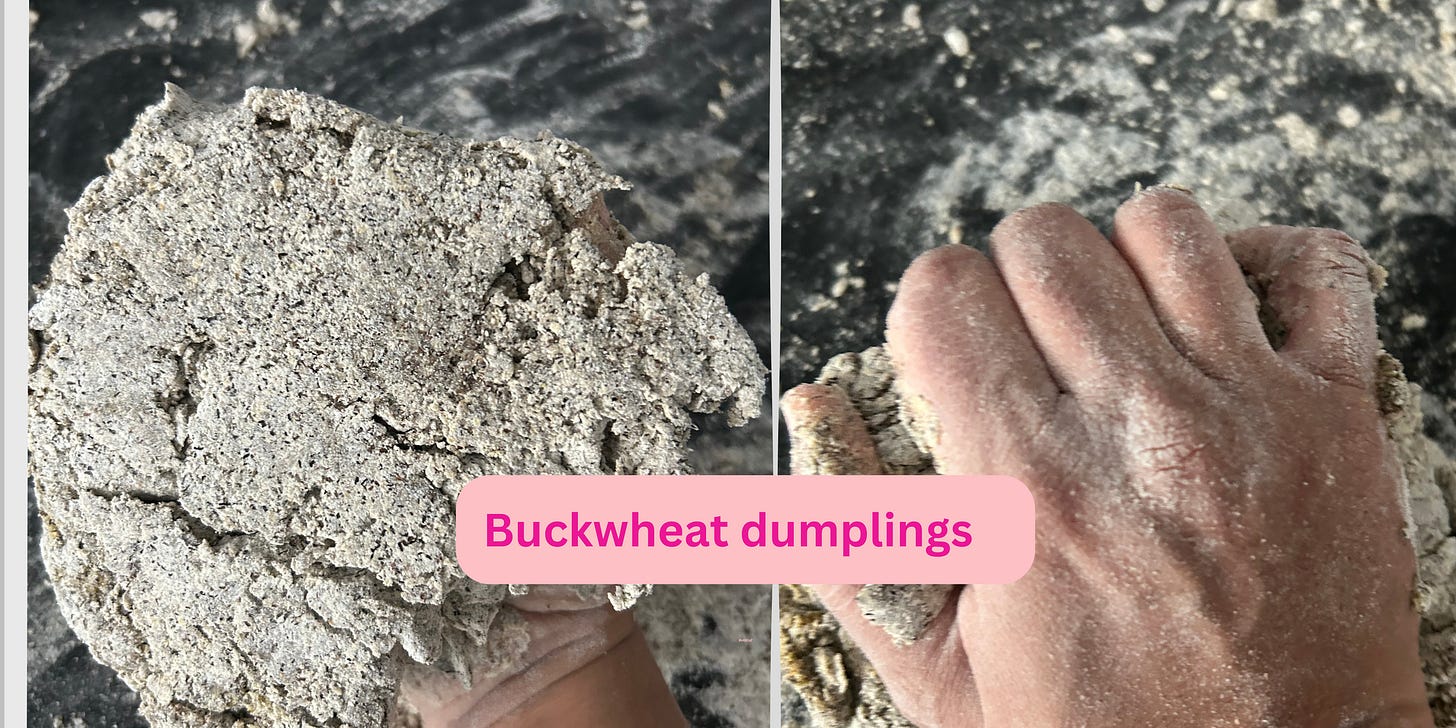


Hi Shreema. This is Pallavi Kaki. You are becoming an awesome cook in your own right presenting us with innovative recipes. Your writing is well researched, funny and smart! Bravo 👏